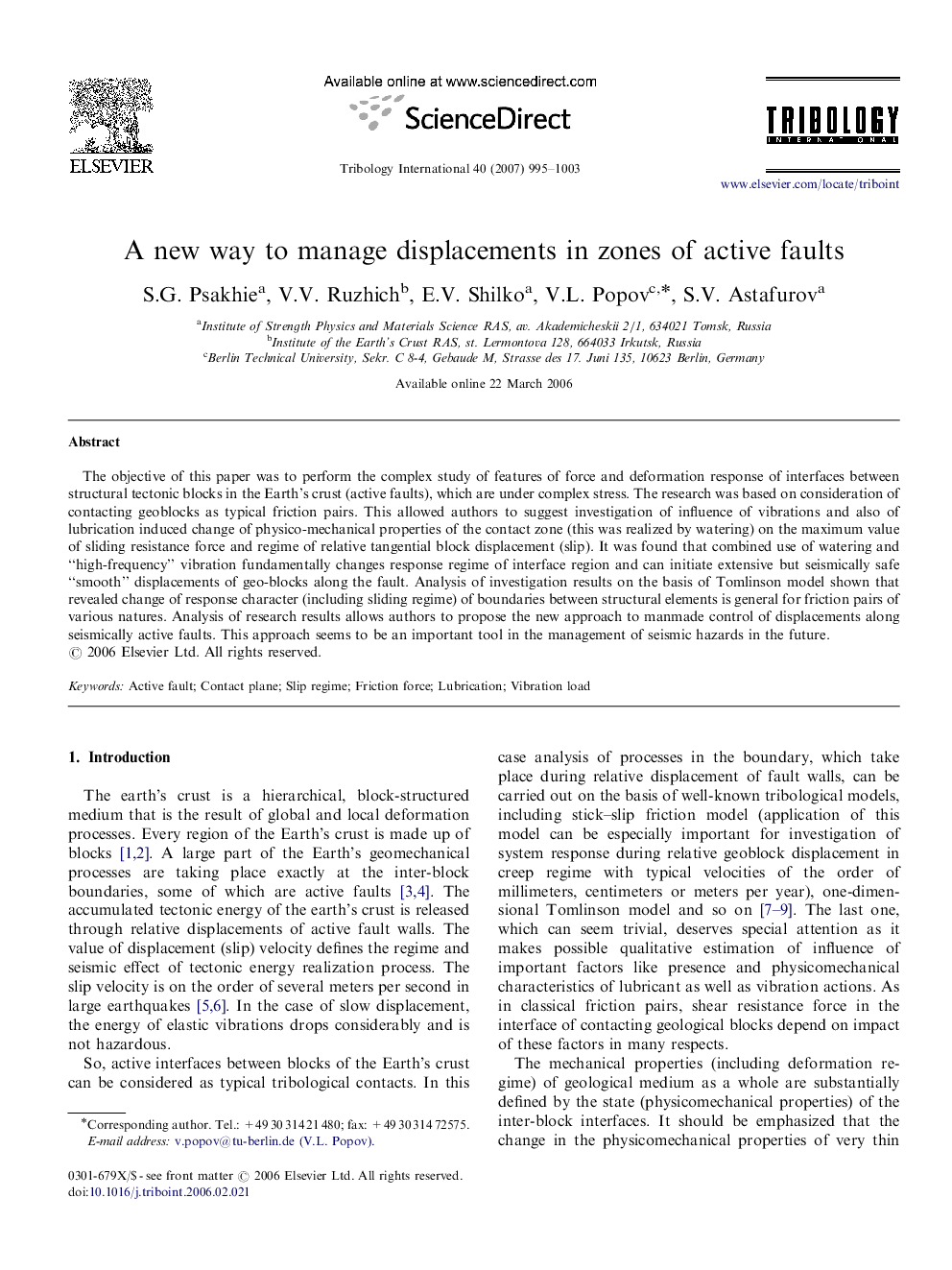| Article ID | Journal | Published Year | Pages | File Type |
|---|---|---|---|---|
| 616569 | Tribology International | 2007 | 9 Pages |
The objective of this paper was to perform the complex study of features of force and deformation response of interfaces between structural tectonic blocks in the Earth's crust (active faults), which are under complex stress. The research was based on consideration of contacting geoblocks as typical friction pairs. This allowed authors to suggest investigation of influence of vibrations and also of lubrication induced change of physico-mechanical properties of the contact zone (this was realized by watering) on the maximum value of sliding resistance force and regime of relative tangential block displacement (slip). It was found that combined use of watering and “high-frequency” vibration fundamentally changes response regime of interface region and can initiate extensive but seismically safe “smooth” displacements of geo-blocks along the fault. Analysis of investigation results on the basis of Tomlinson model shown that revealed change of response character (including sliding regime) of boundaries between structural elements is general for friction pairs of various natures. Analysis of research results allows authors to propose the new approach to manmade control of displacements along seismically active faults. This approach seems to be an important tool in the management of seismic hazards in the future.
